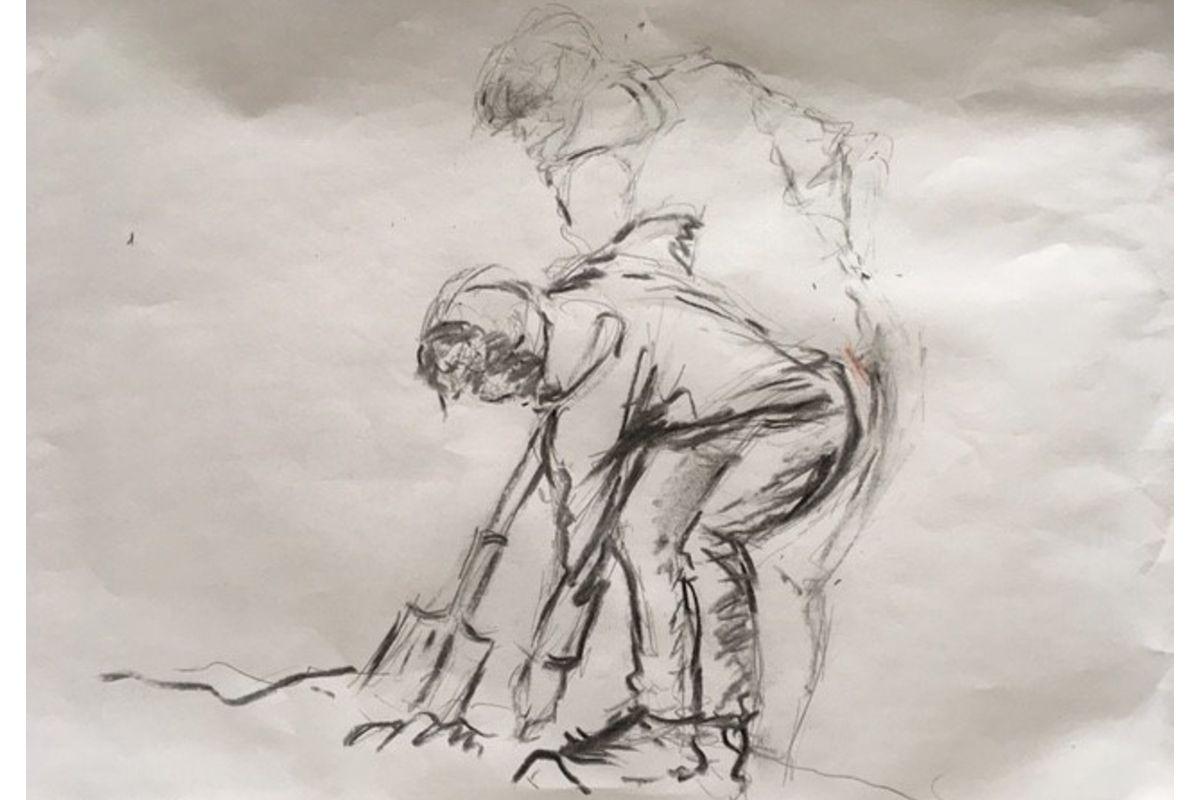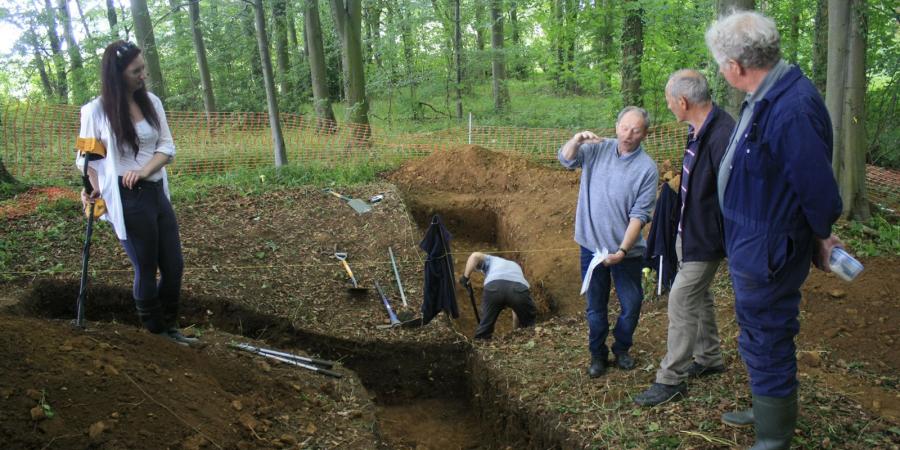The following text is a patchwork of Harthill Community Volunteers’ and Wessex Archaeology archaeologists’ comments and impressions put together by Mili Rajic.
During our final week at Harthill we opened a new area targeting a large bowl-shaped depression, to reveal a feature that, at present is of an unknown purpose. We have also been digging along a ridge in the eastern side of the wood. This ridge looks like a 'lynchet' but this is yet to be confirmed. Unfortunately, this feature lacks any datable finds; similar features are found on sites from the Iron Age right through to the modern era.
Just like during the previous two weeks we have laid out a site grid and took levels (depths) of archaeological features. Normally, we'd be able to just use a GPS to mark exactly where everything is, but being in the woods poses its own set of challenges. Instead, we've been using the centuries-old method of laying out a 5 m x 5 m grid and using an automatic level to measure the height of what we find − sometimes the old ways are still the best ways!
This automatic level, or ‘dumpy’, is a really simple but useful tool. It was easy to educate volunteers in the use of the level, and allowed them to participate fully in the process of recording.
These last three weeks have been one of the most enjoyable experiences. Working on the Harthill Community Project has been an absolute pleasure. Being down a trench scraping away is an absorbing experience. I had expected to be sat in a trench doing menial work, amongst aloof archaeologists who would look down their noses at me and baffle me with technical jargon. That however, has NOT been the case.
The Wessex Archaeology team have been amazing, mighty impressive and only too happy to answer any questions and share their knowledge and ideas. In fact, the mix of people on site was great. The time has just flown! Although we were doing lots of digging, it didn’t feel tiring. The pace was always relaxed and left everyone feeling exhilarated. The wood is beautiful, but sometimes the tree roots were a pain − that is part of archaeology!
We learned so much about the process of archaeology, along with the history of the local area and we enjoyed ourselves enormously.
A new interest was found! Some never thought it was ‘them’ before! Not only has it been interesting/though provoking and educational but it has also been an enjoyable/therapeutic time with a nice bunch of people.
Some wanted to find a skeleton! Others were happy with ‘a something’.
The highlights of each week were archaeological features, hard work and…the delicious homemade cakes! Top notch lemon drizzle springs to mind.
The dig welcomed three kids who really enjoyed the open day. The kids were made to feel involved and also had the science explained to them at an appropriate level. It was a really inspiring, impressive event, which left people feeling privileged for it to be happening in their village.
Teenagers who always had an interest in history were also there. For them being part of a ‘real dig’ was incredible.
We have had the privilege of seeing how the dig has affected both the archaeologists and the wider community. It has been a learning curve for archaeologists and volunteers alike but has been met with interest and enthusiasm by all.
It has been a very worthwhile venture for so many reasons with much to celebrate in this community dig!
I hope it will be repeated soon – well done all.
By Amy Derrick, Paul Rowland, George Kinghorn, Donna Blizard, Otis Gilbert, Alison Foster, Andy and Clare Johnson, Sarah Womble, Yasmin, Alexis and Theo Bramall, Philippa Salmon, Nicholas Clarke, Hans Whitefield, Simon Whittaker, Ted Mullins and Hannah Dabill


Drawings by Elle Clemens, top photograph by Paul Rowland
